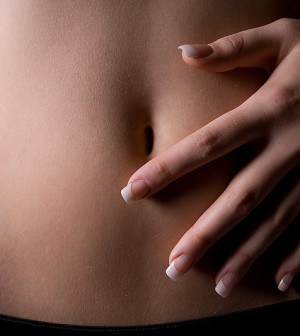- Skip Storing This Everyday Product in the Fridge Door
- Green Tea + B3 Pairing May Boost Brain Health
- Navigating Your Midlife Crisis: Embracing New Possibilities
- City Raccoons Showing Signs of Domestication
- Mapping the Exposome: Science Broadens Focus to Environmental Disease Triggers
- One Week Less on Social Media Linked to Better Mental Health
- Your Brain Changes in Stages as You Age, Study Finds
- Some Suicide Victims Show No Typical Warning Signs, Study Finds
- ByHeart Formula Faces Lawsuits After Babies Sickened With Botulism
- Switch to Vegan Diet Could Cut Your Greenhouse Gas Emissions in Half
Patients Have Many Options When Faced With Gallbladder Disease


It’s only a tiny, bile-producing sac tucked behind your liver, but if your gallbladder goes awry it can spell big health troubles.
In fact, more than 725,000 Americans undergo surgery to treat gallbladder disease each year, say a team of experts reporting July 23 in the New England Journal of Medicine.
So what to do when gallbladder trouble — either an inflamed gallbladder or gallstones — strikes? In a new review, experts led by Dr. Todd Baron, a professor of gastroenterology at the University of North Carolina School of Medicine, compared the pros and cons of several surgical methods for the problem.
Surgeries to remove problem gallbladders are called cholecystectomies, and the most common procedure is the less invasive laparascopic one. According to the experts, this technique, introduced in 1985, leaves little or no visible scarring, but can be difficult to perform in patients with severe gallbladder inflammation or those who have had prior abdominal surgery.
A newer technique is called natural orifice transluminal endoscopic surgery. This method requires no incision, but depends on special equipment and is technically difficult, which means it’s available only at a few medical centers. The gallbladder is reached using an endoscope that’s inserted into the body through a natural opening such as the mouth, vagina or anus.
Another option — for patients who don’t qualify for the laparoscopic approach — is called percutaneous cholecystostomy. In this procedure, a catheter is placed through the abdominal wall directly into the gallbladder, to help surgeons drain bile through the tube and then outside the body.
Baron and his colleagues say this approach is effective in 90 percent of patients with a severe inflammation of the gallbladder, but the external drainage tubes can be uncomfortable.
Finally, the most recent approach involves draining bile directly into the patient’s gastrointestinal tract, where it can also aid in digestion. The bile can be directed this way through endoscopic procedures that use one of two routes, the experts said.
The gallbladder’s prime function is the secretion of bile, which helps the digestive system break down fats, according to data from the University of Maryland Medical Center.
Stones can form in the organ, however, and block bile ducts, causing pain. A chronic blockage can be life-threatening and requires surgical removal of the gallbladder.
More information
The U.S. National Institute of Diabetes and Digestive and Kidney Diseases has more about gallbladder diseases.
Source: HealthDay
Copyright © 2025 HealthDay. All rights reserved.










